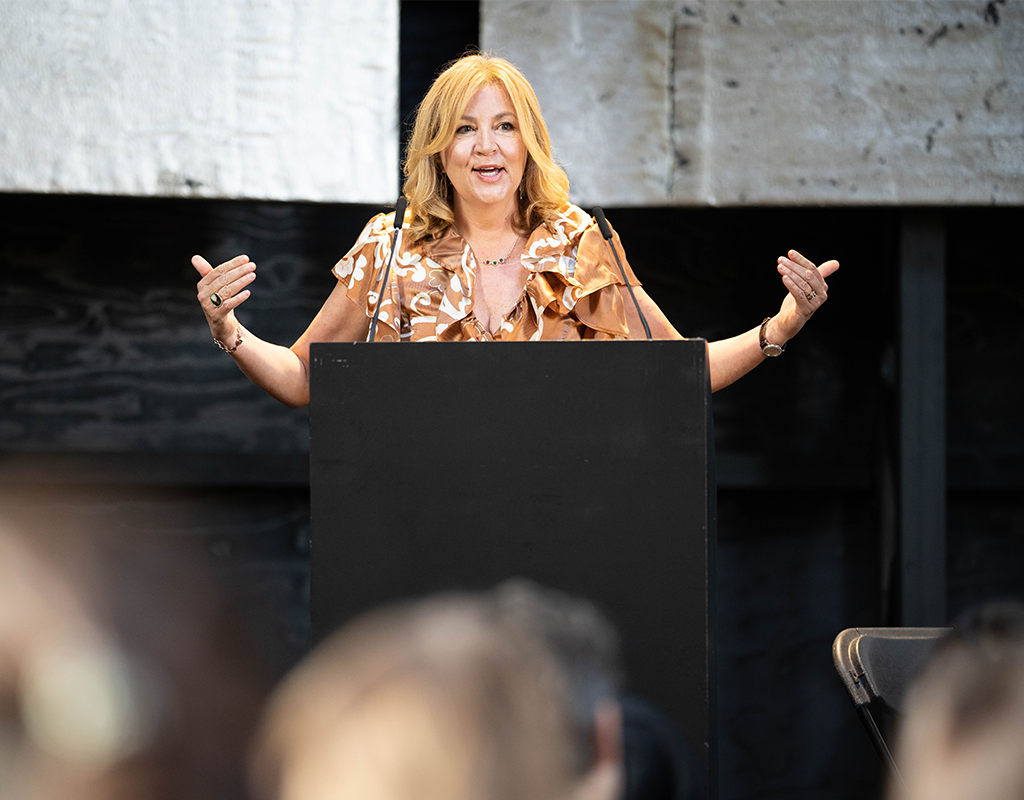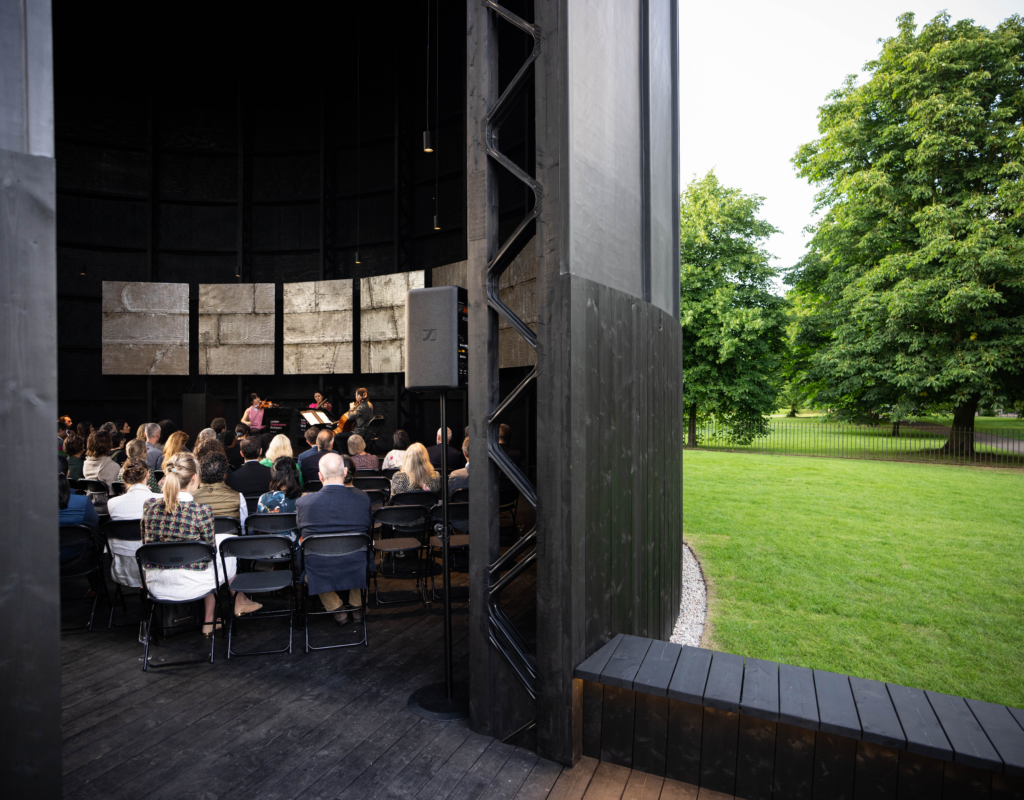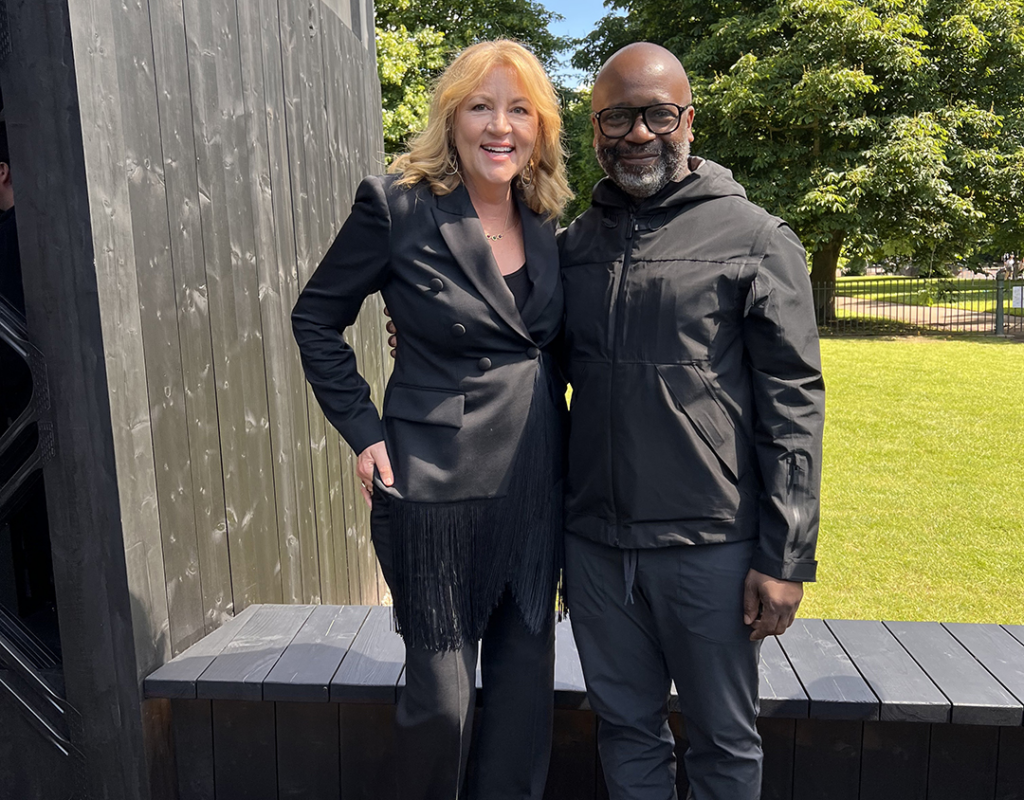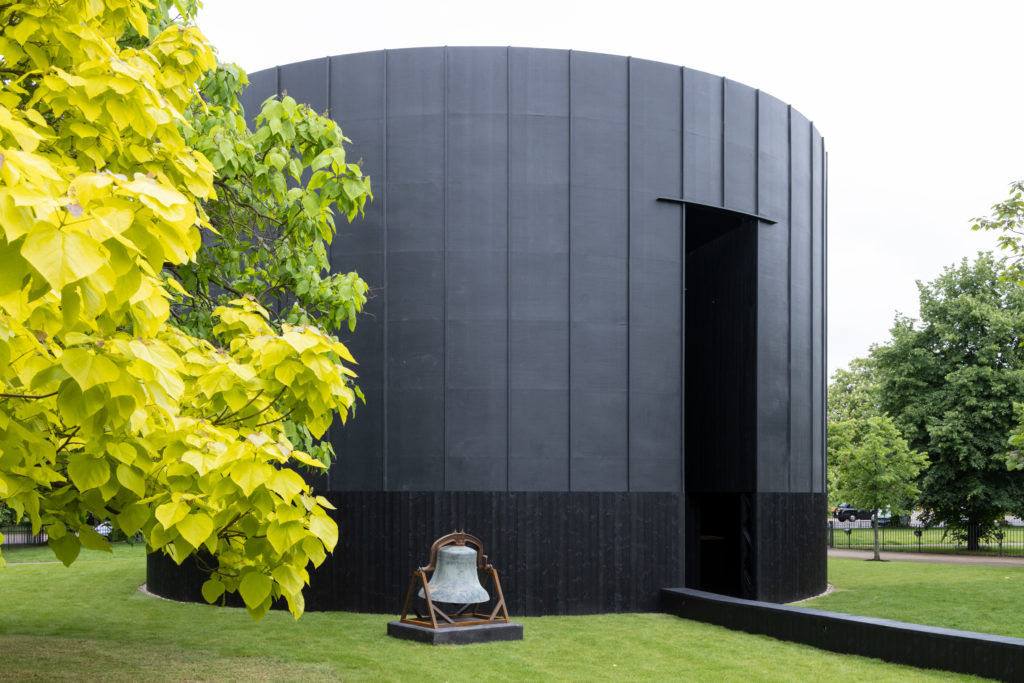Design for Freedom | Pilot Projects & Case Studies
Pilot Projects model more transparent and ethical supply chains.
Grace Farms developed the Design for Freedom Pilot Project program to engage project teams, yield new research and partnerships, and uncover challenges and opportunities of how to build more humanely. This process challenges each team to examine their supply chain for fair labor and galvanize change to create new outcomes for the industry.
Since its inception in 2022, the Pilot Project program has grown to illuminate a select number of projects worldwide. Pilot Projects that are completed and currently under construction reflect a diverse range of typologies across three continents, illustrating the reach of Design for Freedom to enhance projects across the built environment.
Jump to:
Finished Projects & Case Studies | FAQ
Pilot Projects
Karsh Institute of Democracy University of Virginia
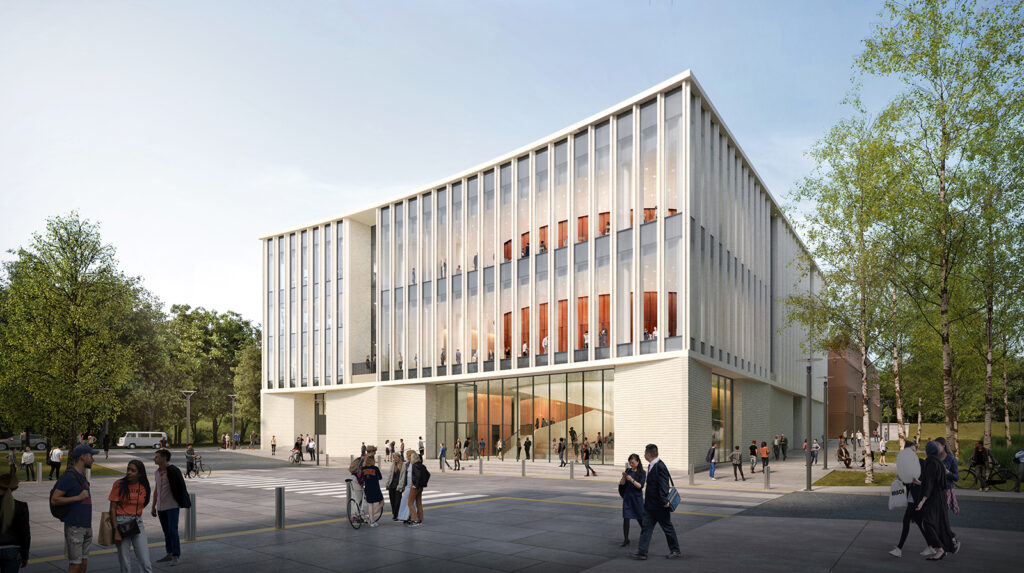
Charlottesville, VA
Size: 69,320 GSF
Completion: 2026
Program: Auditorium, Classrooms, Research, Media Production
Project Team:
University of Virginia
Höweler + Yoon
Hanbury Architects
Hourigan Construction
Karsh Institute of Democracy University of Virginia Project Description
The Karsh Institute of Democracy building is envisioned as a vibrant, continually active place. Situated within the Ivy Corridor, the building’s elevated position above a designed stream corridor and outdoor gathering spaces will make it the western visual terminus for this new redevelopment site on the University of Virginia Grounds.
The new building will be home to the University of Virginia’s Karsh Institute of Democracy. It will also be the new facilities for UVA’s Batten School of Leadership and Public Policy, ensuring cross-pollination of ideas and initiatives.
The eastern façade features a subtle curve that both signals the main entrance and acts as a beacon to the rest of the site. The building is anchored by large, carved cornerstones that visually ground the building and share in the curve of the façade. Each façade features panels spaced at a regular rhythm.
The landscape comprises a broad paved promenade, a tree-lined central green, and integrated building entrance. Exterior materials, such as brick, reference the architectural history of the University while developing a new visual language for the Institute. The columnar precast facade frames the warm cherry wood drum that clads a state-of-the-art auditorium, a centerpiece of the facility.
Hunger Busters
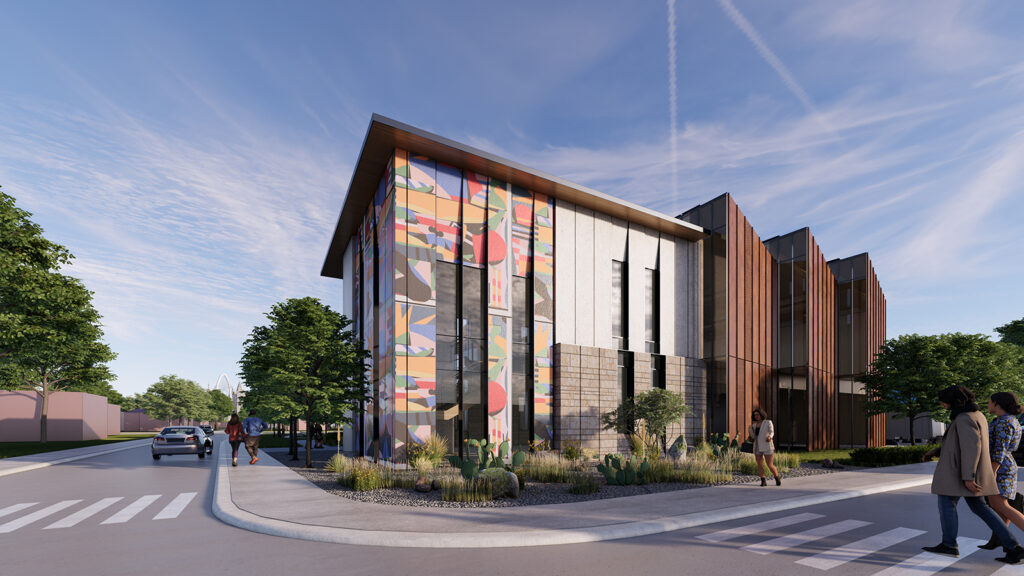
Dallas, Texas
Size: 16,000 sf
Completion: 2025
Project Type: Food Service/Workplace
Project Team:
HKS
Hunger Busters
DBR Engineering
Young Caruso Food Service and Consultants
Hunger Busters Project Description
Hunger Busters is a transformative initiative aimed at alleviating food insecurity among the students of the Dallas Independent School District. With nearly two-thirds of DISD’s students facing food insecurity daily, Hunger Busters, a nonprofit meal provider program established in 2012, has been serving freshly prepared dinners to 4,500 DISD students each school day. Following a setback due to a break-in that resulted in the loss of equipment and food supplies, Hunger Busters seized the opportunity to launch a capital campaign for an ambitious expansion project.
The project, rooted in community engagement, growth, access, holistic well-being, collaborative incubation, and sustainability, will result in a facility situated in the vibrant La Bahara neighborhood of Dallas, Texas. The design serves as a model of circularity by utilizing excess food from local sources to provide nutritious meals for students while minimizing waste, generating energy, and integrating a rainwater collection system for native landscapes and a chef’s garden. To accomplish this pioneering project, the supply chain will incorporate innovative anaerobic digestors to transform food waste into renewable energy and biofertilizer. Additionally, it will include a solar panel roof covering 60% of the surface area, mass timber construction, concrete, exterior stone and metal, textiles and more.
Hunger Busters partnered with HKS through Citizen HKS, HKS’ public design initiative. Established in 2014 with a core mission of enhancing lives and communities, Citizen HKS harnesses the power of design, volunteerism, and financial philanthropy to uplift communities and drive positive change. This initiative adheres to rigorous design standards, prioritizing a people-centered approach and emphasizing the intersectionality between environmental and social design.
Carnegie Global Ethics Hub
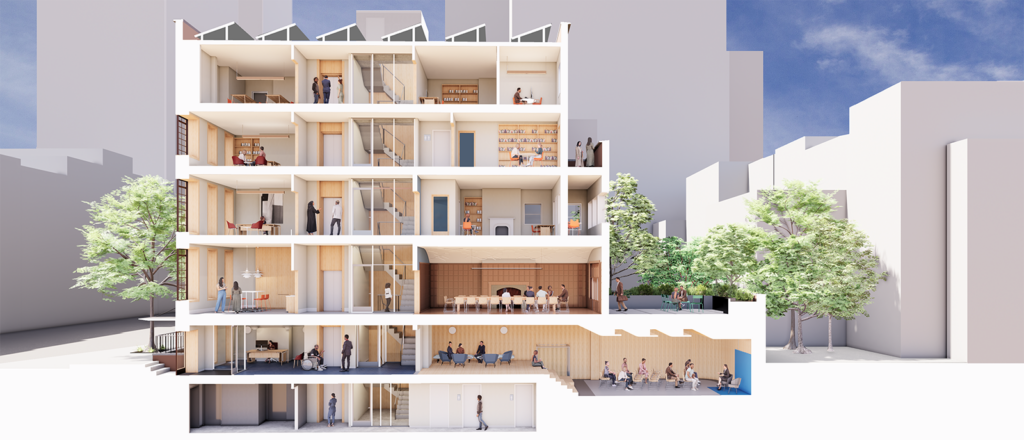
New York, NY
Size: 13,900 sf
Completion: 2027
Project Type: Institutional
Program: 60-person Event Space, Meeting Rooms, Offices, Outdoor Terrace, and Support Spaces
Project Team:
MBB Architects
Carnegie Council for Ethics in International Affairs
Carnegie Global Ethics Hub Project Description
The Carnegie Global Ethics Hub reimagines two connected townhouses currently occupied by Carnegie Council for Ethics in International Affairs. To support the organization’s mission and identity as a hub for global dialogue, MBB Architects is designing a renovation that will reconfigure the interiors to create a dynamic gathering/event space, foster collaboration, and improve accessibility. Advancing the Design for Freedom movement, the design will prioritize sustainable and ethically sourced building materials.
The new Hub will provide a more generous spatial experience to visitors and staff alike through improved daylighting, a reconceived circulation core, modernized work environments, integrated physical and virtual spaces, a renovated terrace, and a balance of historic and contemporary elements. A new one-story addition will serve as a short-term stay studio apartment for distinguished visiting scholars and speakers.
Humanscale Showroom
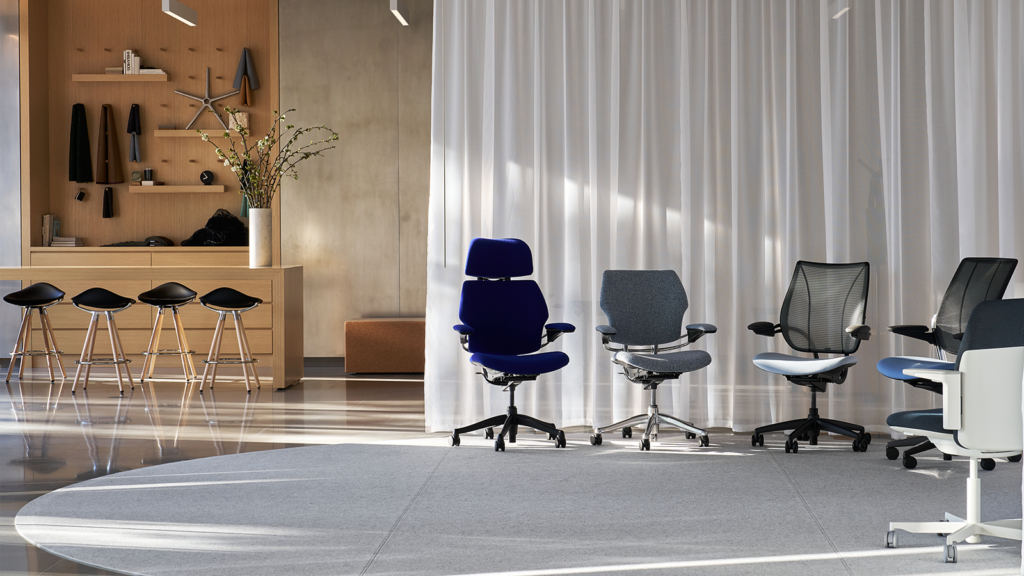
Chicago, IL
Size: 4,000 GSF
Completion: 2024
Project Type: Retail
Project Team:
Humanscale
The Sheward Partnership
Reddymade
Humanscale Showroom Project Description
Nestled in the vibrant Fulton Market District in Chicago, Humanscale’s new street-level showroom is not just a destination for industry insiders but invites passersby to immerse themselves in the brand’s unwavering commitment to ergonomic design, wellness, and sustainability.
Designed in collaboration with renowned architect Suchi Reddy, the showroom features Humanscale’s diverse range of products that elevate work life and leave a positive impact on the world. The space itself is Living Building Challenge-certified—a reflection of the brand’s commitment to doing more good than harm. This certification validates that the space not only meets but exceeds the highest standards of environmental performance.
From innovative office solutions that prioritize well-being to a space that embodies eco-conscious choices, Humanscale invites you to witness a new era in design where functionality, beauty, and planet positivity thrive in harmony.
The Brij, New Delhi, India
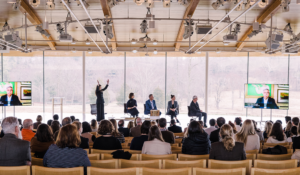
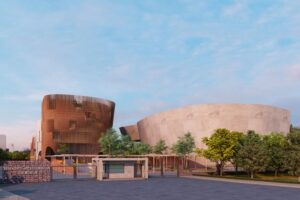
New Delhi, India
Size: 1,000,000 GSF
Completion: 2028
Project Type: Cultural
Project Team:
Serendipity Arts
CRAB Studio
Webb Yates
CP Kukreja Architects
The Brij Project Description
Located on the site of a former quartzite quarry, the new cultural center offers facilities for the visual, performing, literary, and culinary arts as well as a new arts academy. The scheme, aiming to promote interactions between artists and audiences via an immersive environment, is designed by CRAB Studio and CP Kukreja Architects. The project will include six curved “vessels” hovering above a waffle grid, reminiscent of historic Indian Charbagh gardens. The vessels will house offices, residential facilities, galleries, teaching spaces, a library, museum, and theater.
“A new center for arts and culture will be designed for accessibility, inclusion, sustainability, fairness, and as a welcoming place to all. I want to compliment Sharon Prince and Grace Farms for setting up this Summit. In the arts and cultural center that Serendipity Arts is setting up in New Delhi, we are hoping to make this a model project, and we are delighted to partner with Grace Farms to turn this into a Design for Freedom Project,” said Sunil Kant Munjal, Founder Patron of Serendipity Arts.
Unshattered’s Project Possibilities, Wappingers Falls, NY
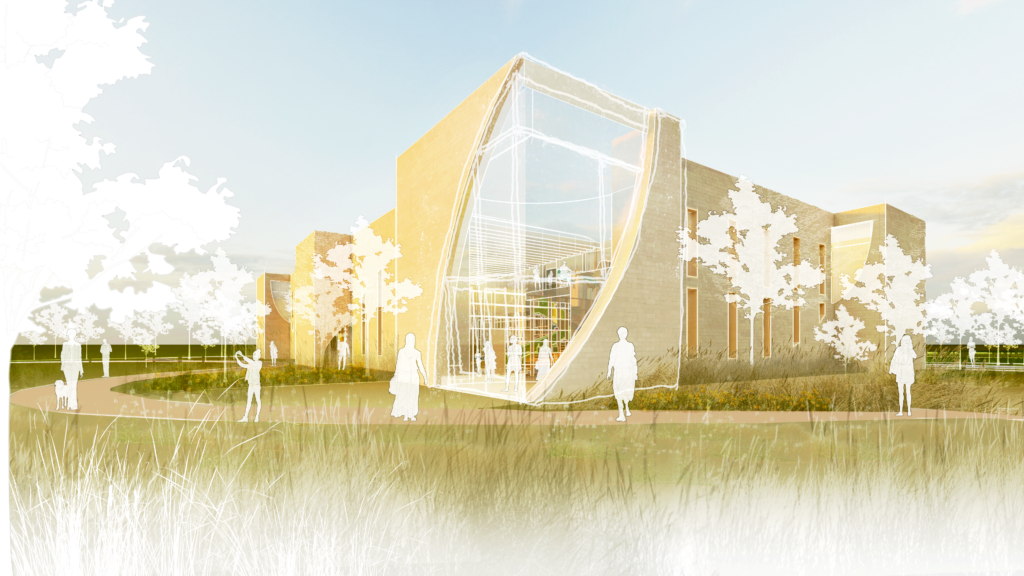
Wappinger Falls, NY
Size: 20,000 GSF
Completion: 2028
Project Type: Adaptive Reuse, Retail, Wellness, Manufacturing
Project Team:
Mass Design Group
Unshattered
Unshattered’s Project Possibilities Project Description
This building will provide new spaces to support Unshattered’s community. Unshattered is a non-profit social enterprise which paves the road between recovery and long-term sobriety by creating opportunities for women overcoming addiction and trauma to develop economic independence. One of the most unique and innovative organizations in this sector, the adaptive reuse of Unshattered’s building, designed by MASS Design Group, will allow for the expansion of their mission to end the addiction relapse cycle.
Pilot Projects Open Call
Grace Farms offers an annual Open Call to project teams interested in submitting a mission-aligned project. The RFP process launches every year in October and concludes in December. Please subscribe to our newsletter for announcements.
Learn more about our annual Open Call.
Completed Pilot Projects & Case Studies
Bigfork Library
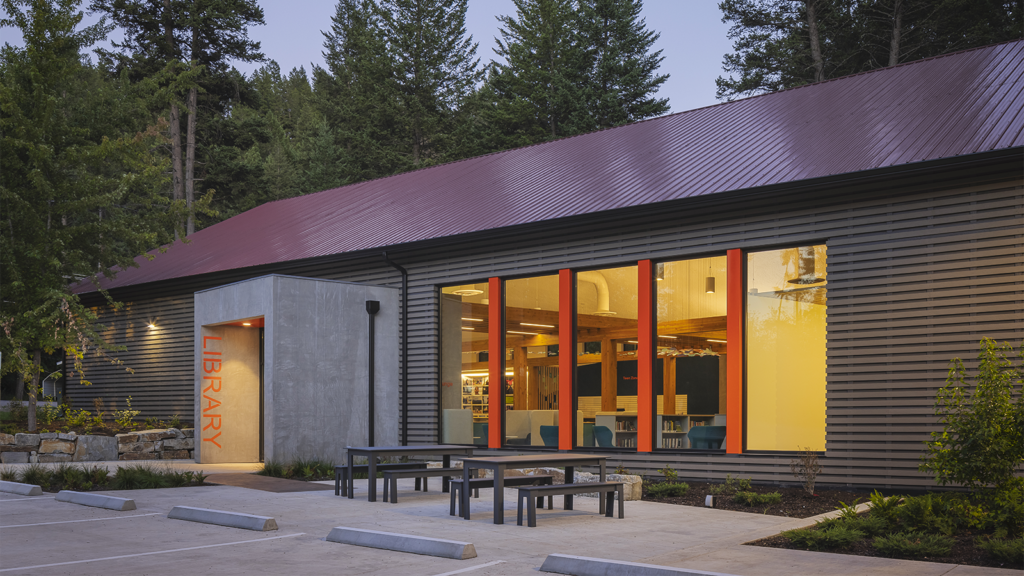
Bigfork, Montana
Size: 6,000 GSF
Completion: 2024
Project Type: Civic
Project Team:
Cushing Terrell
ImagineIF Library Foundation
Bigfork Library Project Description
The Bigfork Library will support the rural community of Bigfork, MT, located in the greater Flathead Valley near Glacier National Park. Nestled at the northeast end of Flathead Lake, the town of Bigfork has a population of just under 5000 people. Surrounded by mountains, lakes and rivers, the town’s main street is filled with galleries and restaurants reflecting the residents’ deep appreciation for music, theatre, and fine art. Despite the many things Bigfork has to offer, a library remained a desperate need until this project’s inception.
In 2018, a committed group of volunteers at ImagineIf Library Foundation took the first step to realize this community library and purchased a 6000 square foot former church rec hall. The dream was to see it converted into a dynamic 21st century library for the Bigfork community. After a series of challenges familiar to any non-profit organization and a global pandemic, the design finally began in early 2023. Working closely with ImagineIf Library Foundation, Cushing Terrell is honored to play a role in realizing this community’s dream.
For an organization that values such holistic education and lifelong learning, the opportunity to study the health and impact of the building materials utilized on their project was an exciting venture. Telling the story of what it meant to be a Design for Freedom pilot project had a positive impact on their fundraising campaign. Additionally, the client is excited to explore ways to share the story with library patrons for years to come.
Read Bigfork Library Pilot Project Case Study
Black Chapel by Theaster Gates (21st Serpentine Pavilion)
London, U.K.
Size: 2,163 sf
Completion: 2022
Project Type: Cultural
Pilot Project Team:
AECOM
Grace Farms Foundation
Serpentine Galleries
Learn more about the Black Chapel by Theaster Gates
The Black Chapel by Chicago-based artist Theaster Gates is the first international Design for Freedom by Grace Farms project. As Responsible Materials Advisor, Grace Farms worked with the Pavilion project team to enhance material transparency and prioritize ethical procurement.
The Serpentine Pavilion, at the Serpentine Galleries, which began in 2000 with Zaha Hadid, has been designed and built by some of the biggest names in international architecture. In recent years it has grown into a highly-anticipated showcase foremerging talents, from last year’s Sumayya Vally, Counterspace (South Africa), the youngest architect to be commissioned, and Frida Escobedo (Mexico), SANAA (Japan), Diebedo Francis, Kere (Burkina Faso), and BjarkeIngels (Denmark), whose 2016 Pavilion was the most visited architectural and design exhibition in the world. Learn More.
“It is an honour that Design for Freedom by Grace Farms is collaborating with Serpentine to assess ethical sourcing of the building materials for the 21st Serpentine Pavilion. This first completed international Design for Freedom project is accelerating the growing movement to eliminate forced labour from the building materials supply chain.” – Sharon Prince, CEO and Founder, Grace Farms Foundation.
Read Black Chapel Pilot Project Brief
Read Black Chapel Pilot Project Case Study
Harriet Tubman Monument
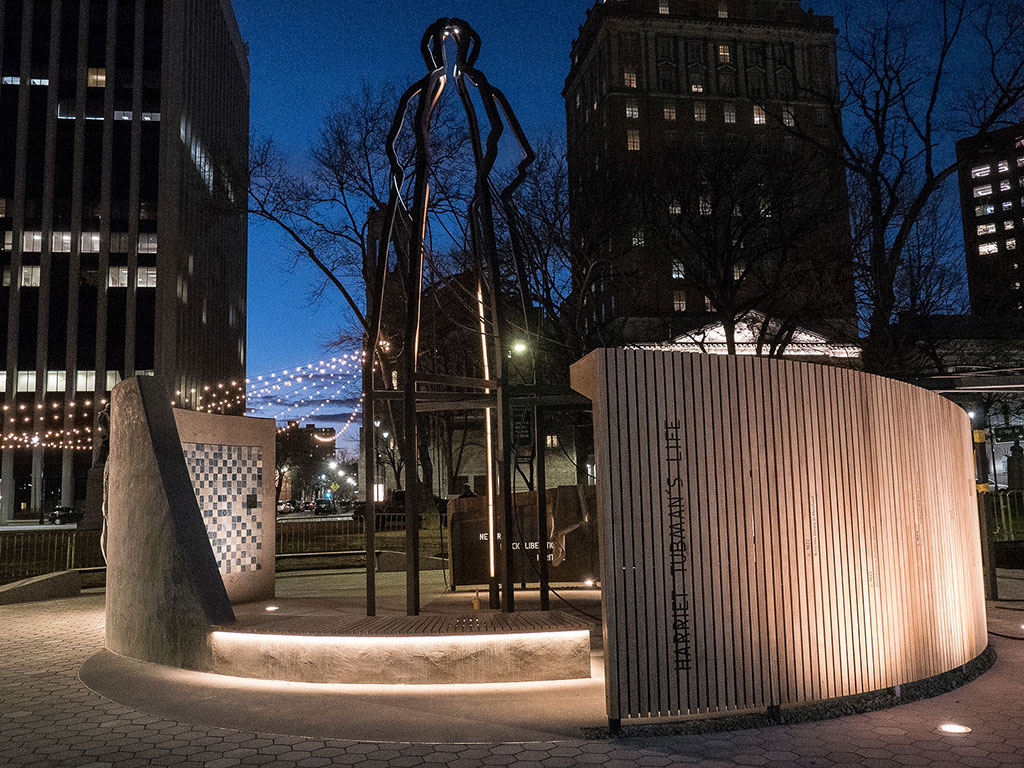
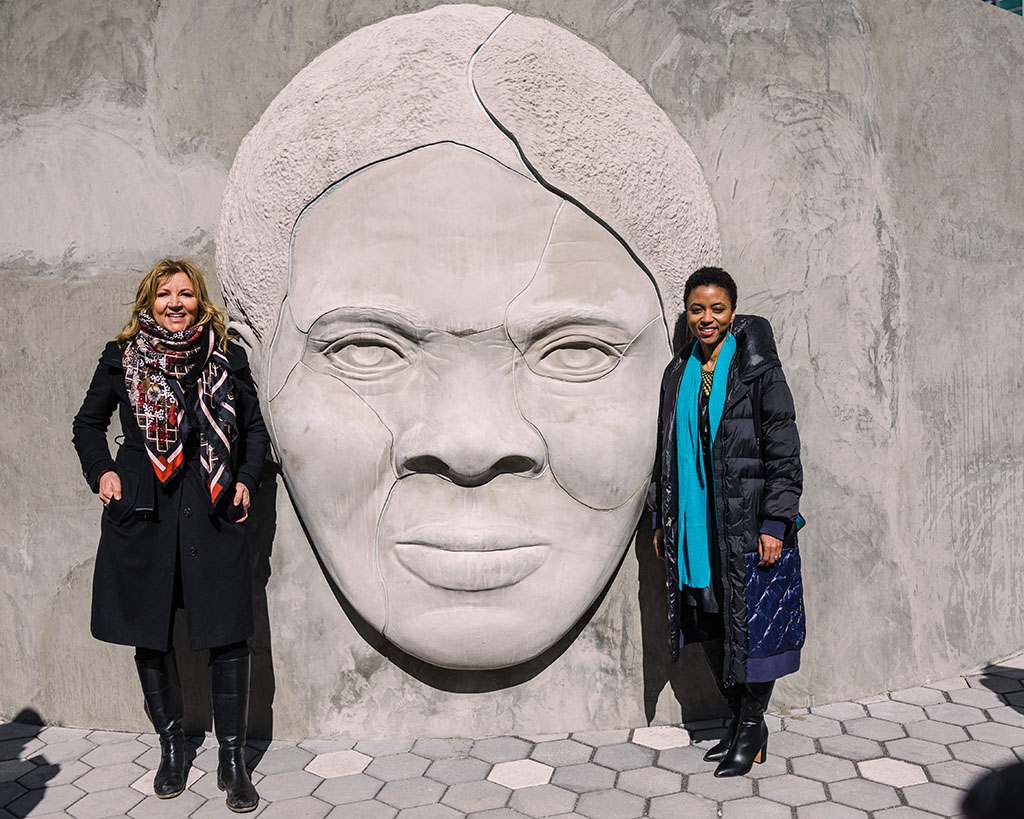
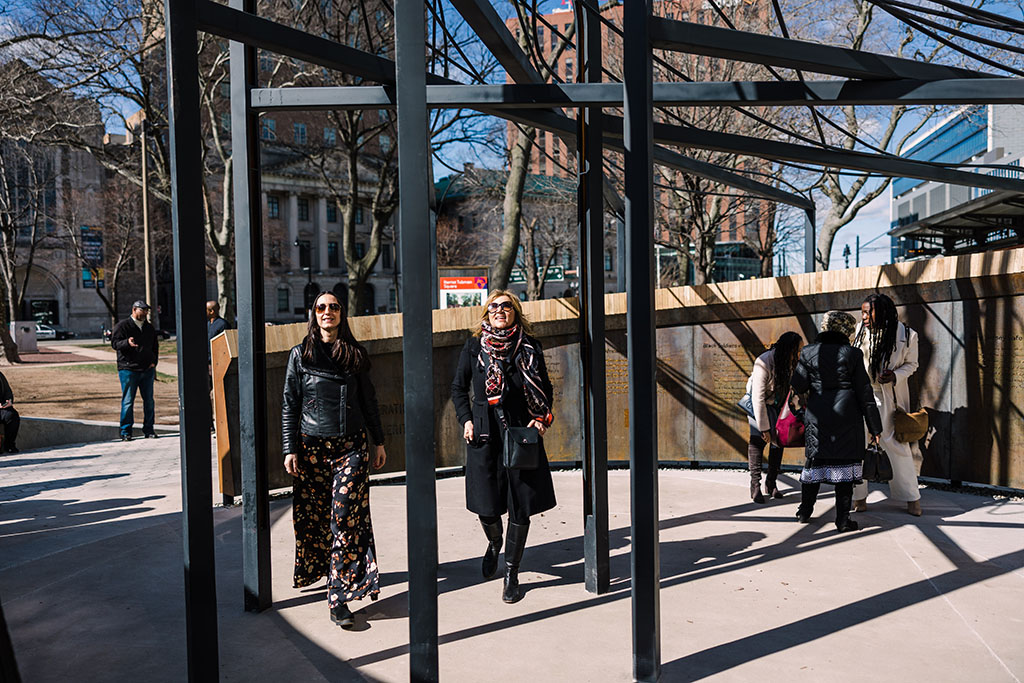
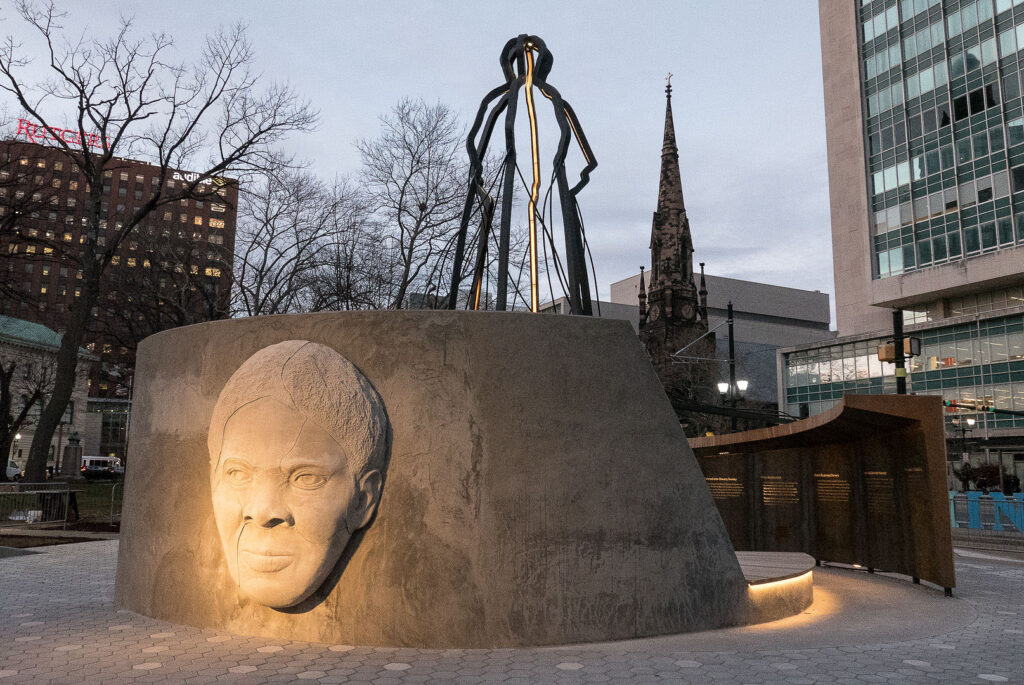
Newark, NJ
Size: 2163 SF
Completion: March 2023
Project Type: Cultural
Pilot Project Team:
Studio Cooke John, Bartholomew Lighting, KSI Engineering, City of Newark, Newark Museum, Newark Public Library, Newark Arts, Audible, Arup, 618 Design, Fire Art, Ferrous Research, Marcan Construction, McGaughey Studio, Any NYC
Learn more about the new Harriet Tubman Monument
The new Harriet Tubman Monument in Newark, NJ, designed by architect, artist, and United States Artists Fellow Nina Cooke John, opened to the public on March 9, 2023. The two-story monument, Shadow of a Face, encourages visitors to connect with Harriet Tubman, her story, and her extraordinary legacy.
Design for Freedom worked with Cooke John on the transparent sourcing of materials for the monument, demonstrating her commitment to design and build with materials that are free of forced labor.
Read Harriet Tubman Monument Case Study
New Canaan Library
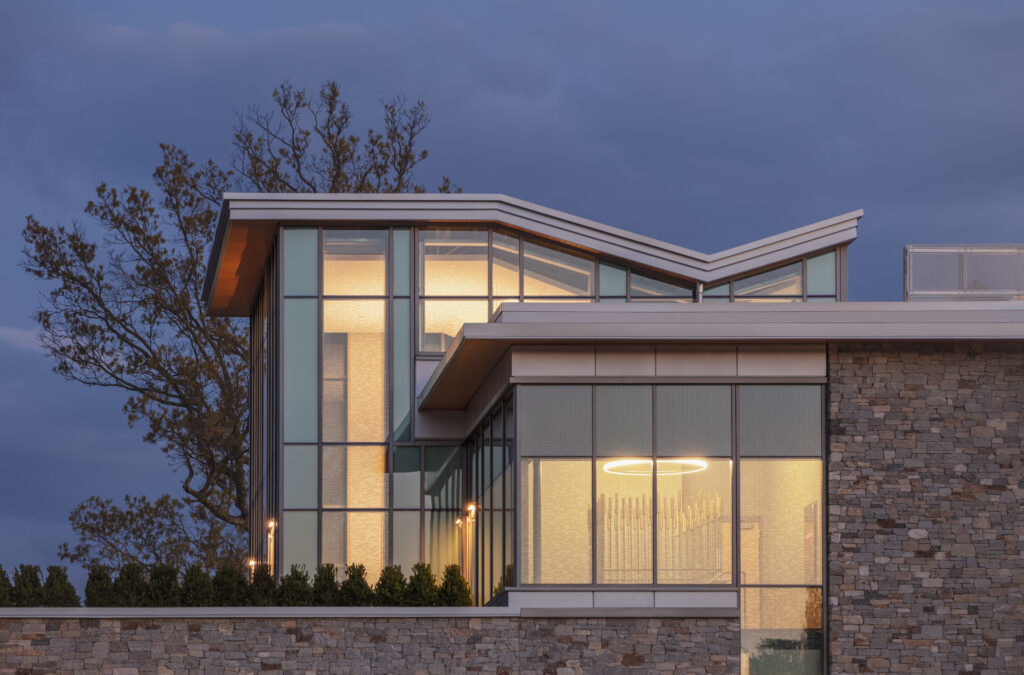
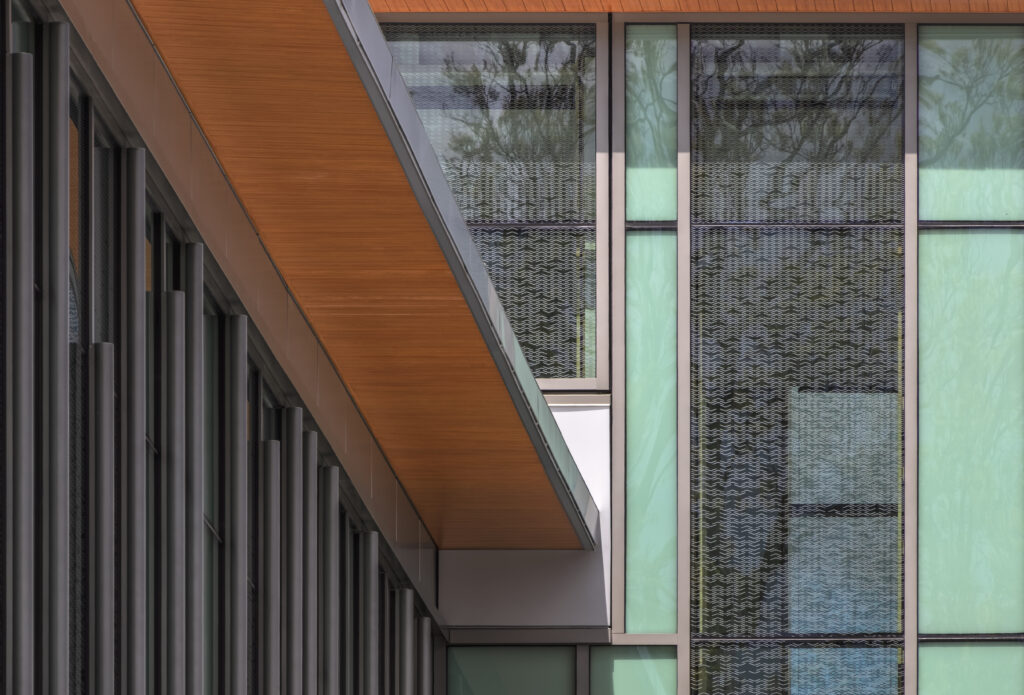
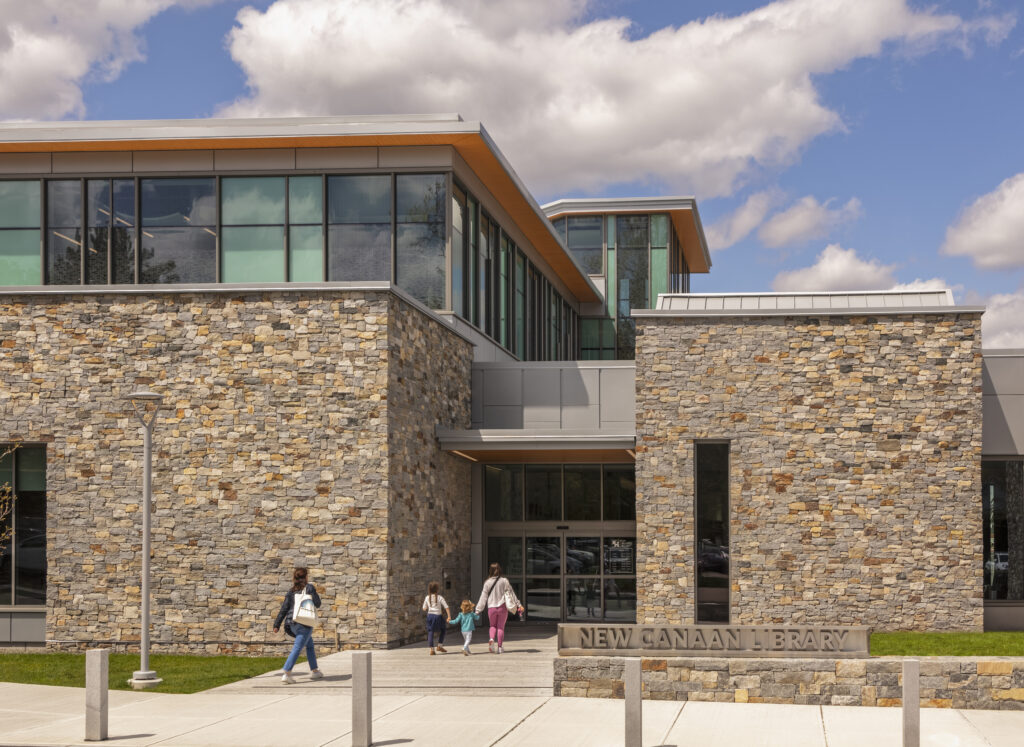
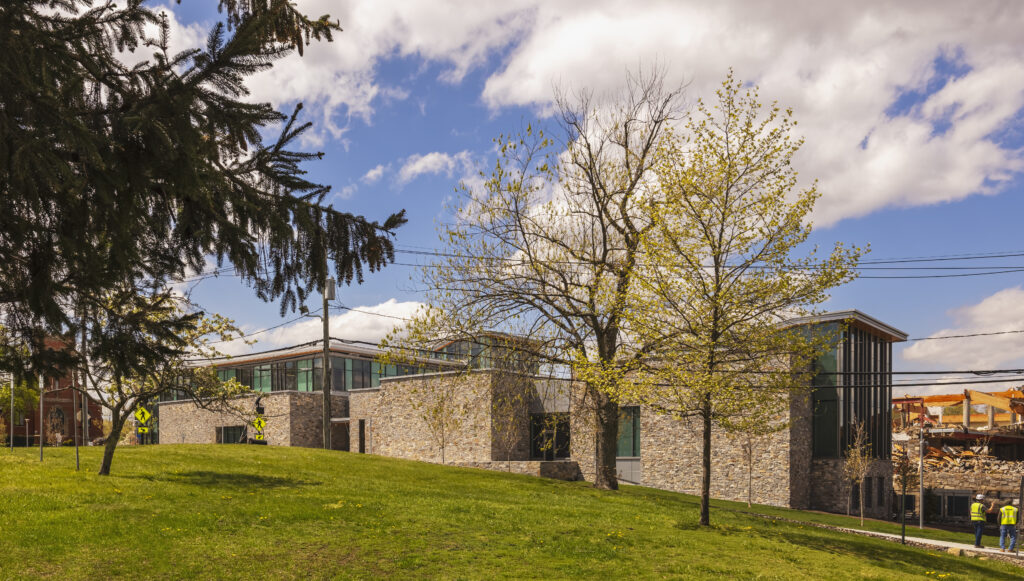
New Canaan, CT
Size: 42,000 GSF
Completion: February 2023
Pilot Project Team:
Centerbrook Architects + Planners, Turner Construction Company, MillerKnoll, Stimson Landscape Architects, Kohler Ronan Consulting Engineers, and Karp Associates
Learn more about the New Canaan Library
The New Canaan Library, in New Canaan, CT, is the first Design for Freedom building project in the U.S.
Design for Freedom partnered with New Canaan Library on a new state-of-the-art knowledge and learning center, to explore and pursue the use of low-risk materials – materials less likely to be sourced through forced labor – during the building’s construction.
Throughout the process, Design for Freedom collaborated with Centerbrook Architects, Turner Construction, and 21 subcontractors to trace raw and composite (engineered from two or more materials) building materials as far as possible within the supply chain. The new library project opened on February 14, 2023.
Much like Grace Farms, libraries bring communities together and disseminate knowledge, resources, and stimulate conversation. Grace Farms and the Library’s collective commitment and shared work will provide key data and research that advances the movement and serves as a replicable example of what is possible when transparency is brought to the global building materials supply chain.
Read New Canaan Library Case Study
Temporal Shift by Alyson Shotz
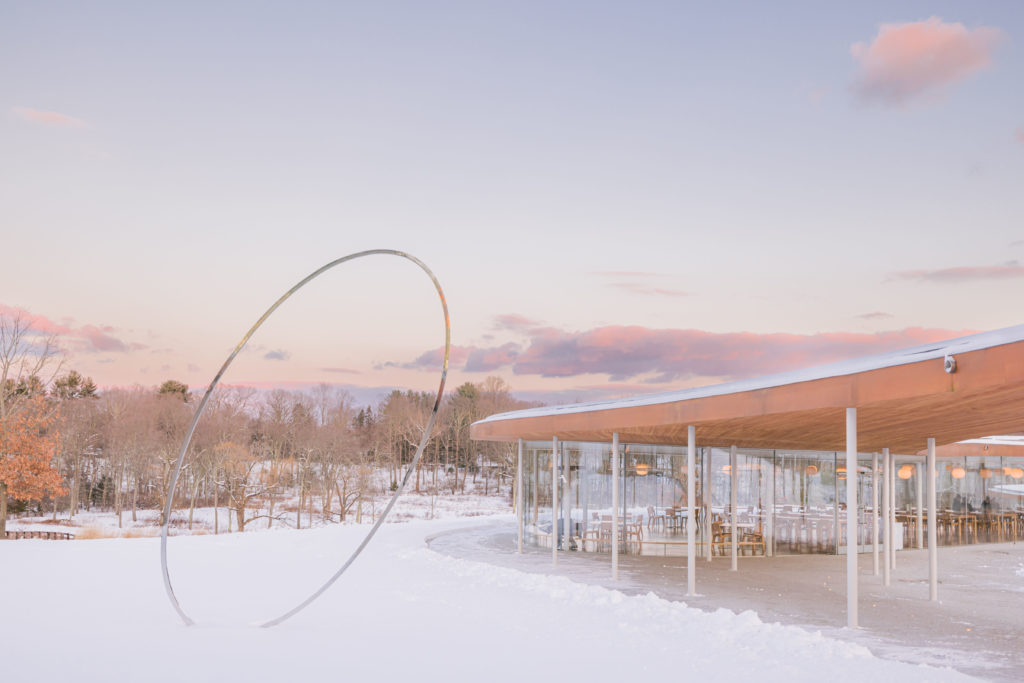
Learn More about Temporal Shift
Temporal Shift by Alyson Shotz is a site-responsive sculpture located at Grace Farms from September 2021 through October 2022. Temporal Shift interacted with natural light and animated an interior courtyard of the SANAA-designed River building at Grace Farms, describing time as the seasons change. When fabricating and installing the work in summer 2021, Grace Farms was presented with the opportunity to align the process of bringing this exciting work to the public with the ever-expanding framework of analysis, inquiry, and collaboration demonstrated by Design for Freedom.
Grace Farms Foundation worked with Design for Freedom Working Group members Joe Mizzi and Jay Gorman from Sciame to trace the stainless steel and concrete used in Temporal Shift to ascertain sources and labor inputs.
The process of applying an ethical framework to the sourcing of materials for the sculpture installation made clear that ethical sourcing is possible and 100% of the steel and concrete used in Temporal Shift was ethically sourced.
Read Temporal Shift Case Study
Pilot Project
Frequency Asked Questions
Design for Freedom has developed a Pilot Project Program that is a tangible example demonstrating ethical supply chains in completed works. Each Pilot selects at least ten building materials that are traced as far back as possible for provenance and labor inputs. Through this process, each Pilot Project brings awareness to project partners, contractors, designers, engineers, manufacturers, suppliers, occupants and consumers on the risk of continued exploitative practices and initializes institutional and civic responses.
Read the Design for Freedom Report to understand the scope of the problem and challenges facing the eradication of forced and child labor from the built environment. For material specific information, explore the Design for Freedom International Guidance & Toolkit to learn more about industry certifications of high-risk materials within the built environment. Utilize the following tools to integrate responsible sourcing into daily practice.
Ethical Design Requirements and Division Specs – Add the Master Spec language to General Specs.
Project Team and Supplier Engagement Letter – Begin a conversation about ethical sourcing with new contacts.
Ethical Material Tracking Schedule – Maintain a concise list of identified products for investigation.
Responsible Certifications, International Frameworks & Standards – to filter relevant certifications by material, 3rd-party verification and other differentiators.
Self-Assessment Questionnaire and STRT – Request supply chain information from product manufacturers and suppliers.
Contract Language for Architects and Contractors – for firms to provide for Owners or Clients
We invite project partners to submit only one proposal annually each fall.
Grace Farms does not charge a fee to submit or participate in the Pilot Project Program. Project teams participate in tracing responsible materials on a pro bono agreement, understanding each product investigation adds to the industry’s body of knowledge and adds value to the project delivered. Grace Farms acts as an advisor to project teams who have committed to doing this work.
There are more than a dozen Design for Freedom Pilot Projects currently in design or completed on three continents, with a range of typologies. To learn more about the Pilot Project process, materials examined and outcomes read the Pilot Project Case Studies.
Currently, Design for Freedom Pilot Project are located in the U.S., U.K. and India. We hope to continue to represent a diverse number of countries, cities, and communities throughout our portfolio of Pilot Projects. We encourage submissions from outside the United States when possible.
Yes, you can submit a confidential project under an NDA.
There is no pre-determined number of projects that will be selected. We select the projects that most align with our mission and advance the movement.
Absolutely! We are eager to share that Pilot Projects can demonstrate ethical supply chains across programmatic typologies and welcome a diverse pool of owners, partners and project types.
Design for Freedom is not a certification. The Pilot Project Program is a unique opportunity to conduct research at the forefront of the Design for Freedom movement and gain insight into the process of supply chain transparency within the built environment. Although we do not consider the projects ‘certified’, each project is considered an official Design for Freedom Pilot Project because it meets requirements to provide significant documentation into the labor practices of an identified number of building materials and revealing new outcomes.
As an advisor, Grace Farms creates a project process that best suites each project. The Design for Freedom team meets regularly with project teams to identify materials for investigation and to support the integration of ethical sourcing. The Design for Freedom team facilitates discussions with industry experts and manufacturers who inform the project team and encourages educated decision making. Manufacturers encountered on the project utilize recommended tools to verify due diligence efforts for ethical sourcing and to meet compliance with global laws. As a final deliverable, Design for Freedom Pilot Project Case Studies are developed by Grace Farms to highlight the unique approach, relationships and outcomes produced by every project.
